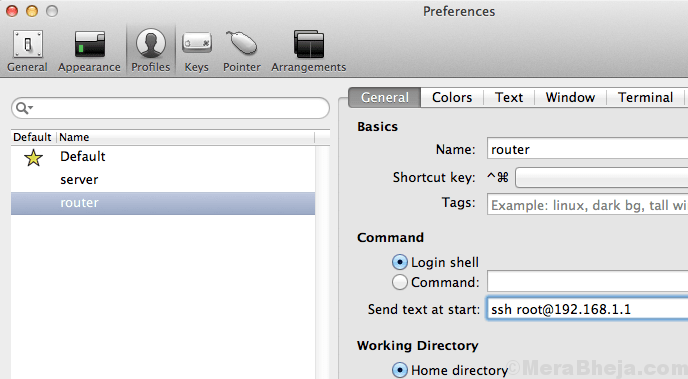

Password entry is ALWAYS interactive when setting up the SSH connection. There is no mechanism for defining a plain text password. The various syntaxes are all documented on the man page. Lastly, LocalForward sets up a port forwarding rule that I send through the SSH tunnel. User is self explanatory and there just to be explicit, and the IdentityFile is the path to the Private Key file it uses to connect. Since serve is not necessarily a DNS name, I specify the Hostname that it should actually connect to (no, not actually mine). When running that, it loads all the properties listed until the next Host line. The Host line specifies the host tag you will use when invoking ssh. The second section is a host-specific configuration. The first three lines are global properties, they affect every SSH connection. Whitespace is purely personal preference, it is not required except to separate Keys from Values. Some example contents from my ssh config file are: ControlMaster autoĬontrolPath ~/.ssh/sockets/master-%r-%h-%p See the manpage, either via man ssh_config on your own machine which will contain the most appropriate version, or you can view it online from OpenBSD's Site. I use this file to control tunnels I always use, the private key needed for the connection, the username (if it differs from my local username), etc. ssh and enter it.Ĭonfig is the file name, it is a plain text file with configuration parameters. If you're in Terminal and in your home directory, you can simply run cd. ~, your home directory, it expands on my system to /Users/jason. This file doesn't exist by default (per the comments on the question), but should be written at ~/.ssh/config. The SSH client allows you to store an amazing amount of properties based on a given hostname, even global defaults, in the "ssh_config" client file. On Linux, OS X, and most other UNIX-y based environments, SSH is generally purely command line, but still amazingly powerful.

PUTTY MAC OS X WINDOWS
And it keeps getting better every few weeks or months.PuTTY is a great Windows frontend, not to mention the need for an SSH client in the first place. (It's possible Terminal does some of the things I mention here-it's been so long since I've used it that I don't recall, but when I switched I paid close attention to the differences and there were lots of advantages to iTerm. I've been using it for years now and have never missed Terminal. Development is pretty active, but documentation seems to lag behind. Some are mentioned here but some are not, such as co-processes, triggers,smart selection, semantic history, and so on. paste history (a good complement to the shells' command histories)Īnd a lot more.a full-screen view (and you can choose from either its own or OS X's built-in full-screen mode I greatly prefer iTerm's own full-screen mode, since it doesn't force you to move to a new 'Space', thus allowing Command-Tab to still work properly).Terminal-level auto-completion (I don't use this feature so I can't detail how it has advantages over shell-level autocompletion: especially if you use the fish shell or zsh, then it may not be better).Special provision for integrating with tmux (an alternative to GNU screen, and which most people regard as better & faster than screen).Split panes (the sort of thing you can do in GNU screen or tmux, but at the level of the terminal emulator rather than in a program running on the server).Support for 256 colors (you'll never go back to 16 colors after using 256).While the original iTerm had a tabbed interface before Terminal did, iTerm 2 again eclipses Terminal by adding: The best GUI application for SSH (and everything else you can do on the command line) is iTerm 2.


 0 kommentar(er)
0 kommentar(er)
